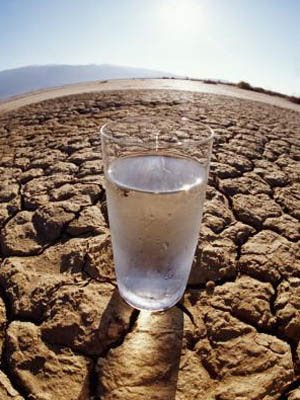The City of Missoula Versus Mountain Water and the Carlyle Group raged through its seventh day this past week and is on course to conclude this coming week, after which Judge Karen Townsend will determine whether it is necessary to condemn the infrastructure through eminent domain. The case for condemnation gathered steam this week, notably on Monday with the revelation that Missoula’s water system is among the leakiest in the country, if not outright the single leakiest municipal water system in the nation.
Testifying on Monday, 23 March 2015, speaking on behalf of Henningson, Durham and Richardson, Inc. HDR’s Senior Vice President of engineering Craig Close displayed several images depicting rusty pipes, leaky pumps, and crumbling dams that he collected during his survey of Missoula’s water system. According to Close, the Mountain Water system is leaking more than 4 billion gallons of water a year, which amounts to 50 percent of total water pumped, putting Missoula well above the national average for leaky systems and far outside the acceptable range. But instead of addressing the cause of the leaks, Mountain Water has repeatedly decided to alleviate the symptoms of the problem by constructing more pumps, thereby exacerbating the problem while simultaneously raising rates to account for the additional flow charges. And guess who gets to pay for all of that excessive waste? The costs associated with pumping more water through increasingly leaky pipes costs Missoulians more than $600,000 annually, and that’s just the electrical costs to power the additional pumps to keep up with the increasing leakage.
Close mentioned that this volume of leak is unprecedented with regards to the modest size of Missoula’s water system, which is composed of a mere 319 miles of main. In terms of amount by volume, Missoula’s leak rate is the highest Close has ever seen.
Then on Wednesday, 25 March, Kees Corssmit of Geitner Environmental Management Group admitted not only that the leakage rate at Mountain Water reveals “significant” problems, but that he has only seen one other instance of a system that leaked anywhere near the rate of Mountain Water during more than 4 decades of studies.
But coming back to Close’s revelation that Mountain Water leakage totals more than four billion gallons of water lost annually, he went on to explain that not only does that leakage pour chlorine and other contaminates into our aquifer, but it creates a conduit between the surface and the aquifer through which surface level contaminates such as fertilizers, pesticides and automotive chemicals can seep into the aquifer more easily thus sullying our groundwater with a chemical cornucopia. In other words, contaminates are whisked into our aquifer directly by Mountain Water’s extraordinarily leaky infrastructure.
This problem would be less alarming if there weren’t so many surface-level contaminates leeching into the Earth already. Earlier this year Jessica Mayrer published a column in the Missoula Independent featuring Travis Ross from the Missoula City-County Health Department. Ross calculated that every single day, as much as 300 gallons of chemical waste are being released from a single, leaky underground storage tank owned by Montana Rail Link and operated by Emerald Services on Missoula’s North side at the Phillips Street Chemical Transfer Facility. The tank farm contains chemicals like petroleum, antifreeze and windshield wiper fluid, and could be leaking contaminants into the soil. More than 80 complaints circulated from residents in the vicinity of the Tank farm who reported feeling ill, citing symptoms such as nausea and sore throats, that seemed to be attributed to some kind of chemical contaminant in the area. Though the city has launched a formal inquiry, the task force assigned to the case is waiting for warmer spring temperatures before continuing with the investigation.
As bad as a chemical leak of 300-gallons per day is, that situation would be less severe if Mountain Water’s leaky infrastructure wasn’t providing a direct go-between for these surface level contaminants and the aquifer that we source our water from. The pipes wouldn’t be so leaky had money been spent on reinforcing and rebuilding sections of leaky and condemned infrastructure; that infrastructure wouldn’t have been so neglected had the money collected from Missoula rate-payers been reinvested into the system instead of getting shuffled into the stock portfolios of a few wealthy executives and shareholders. With more than a million-dollars a month collected from Missoulians who rely on Mountain Water, there is no excuse for this situation other than simple greed – a direct manifestation of private ownership of a public utility that is, for all intents and purposes, a natural monopoly, since it is literally impossible for a competing agency to offer the same service.
Gabrielle Lafayette is a journalist, writer, and executive producer for the Outer Limits Radio Show.
Catch the cloudcast at mixcloud.com/outerlimitsradioshow
Check out the more frequently updated tumblr page at outerlimitsradioshow.tumblr.com
Contact the research team at outerlimitsradioshow@fastmail.fm
